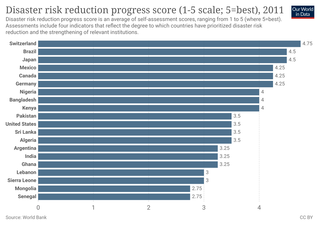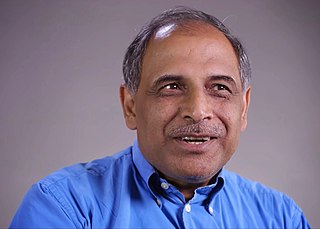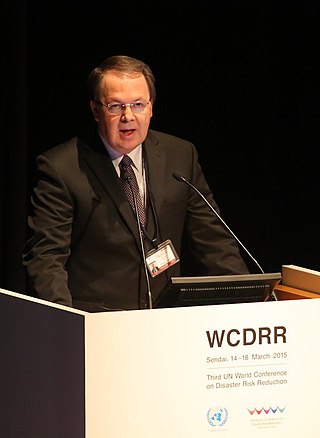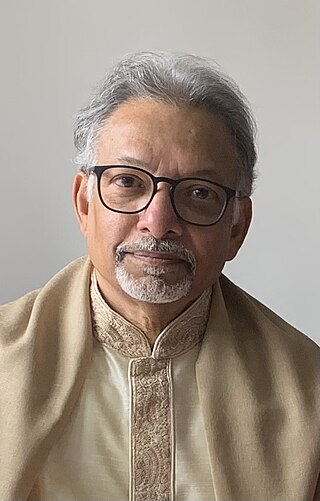
A disaster is an event that causes serious harm to people, buildings, economies, or the environment, and the affected community cannot handle it alone. Natural disasters like avalanches, floods, earthquakes, and wildfires are caused by natural hazards. Human-made disasters like oil spills, terrorist attacks and power outages are caused by people. Nowadays, it is hard to separate natural and human-made disasters because human actions can make natural disasters worse. Climate change also affects how often disasters due to extreme weather hazards happen.

A natural disaster is the very harmful impact on a society or community after a natural hazard event. Examples of natural hazard events are avalanches, blizzards, droughts, dust storms, earthquakes, floods, hails, heat waves, impact events, landslides, sinkholes, tornadoes, tropical cyclones, tsunamis, volcanic activity and wildfires. A natural disaster can cause loss of life or damage property. It typically causes economic damage. How bad the damage is depends on how well people are prepared for disasters and how strong the buildings, roads, and other structures are. Scholars have been saying that the term natural disaster is unsuitable and should be abandoned. Instead, the simpler term disaster could be used. At the same time the type of hazard would be specificed. A disaster happens when a natural or human-made hazard impacts a vulnerable community. It results from the combination of the hazard and the exposure of a vulnerable society.

A humanitarian crisis is defined as a singular event or a series of events that are threatening in terms of health, safety or well-being of a community or large group of people. It may be an internal or external conflict and usually occurs throughout a large land area. Local, national and international responses are necessary in such events.
The World Conference on Disaster Risk Reduction is a series of United Nations conferences focusing on disaster and climate risk management in the context of sustainable development. The World Conference has been convened three times, with each edition to date having been hosted by Japan: in Yokohama in 1994, in Hyogo in 2005 and in Sendai in 2015. As requested by the UN General Assembly, the United Nations Office for Disaster Risk Reduction (UNDRR) served as the coordinating body for the Second and Third UN World Conference on Disaster Reduction in 2005 and 2015.

Emergency management is a science and a system charged with creating the framework within which communities reduce vulnerability to hazards and cope with disasters. Emergency management, despite its name, does not actually focus on the management of emergencies, Emergency management or Disaster management can be understood as minor events with limited impacts and are managed through the day-to-day functions of a community. Instead, emergency management focuses on the management of disasters, which are events that produce more impacts than a community can handle on its own. The management of disasters tends to require some combination of activity from individuals and households, organizations, local, and/or higher levels of government. Although many different terminologies exist globally, the activities of emergency management can be generally categorized into preparedness, response, mitigation, and recovery, although other terms such as disaster risk reduction and prevention are also common. The outcome of emergency management is to prevent disasters and where this is not possible, to reduce their harmful impacts.

Judith Rodin is an American research psychologist, executive, university president, and global thought-leader. She served as the 12th president of the Rockefeller Foundation from 2005 to 2017. From 1994 to 2004, Rodin served as the 7th president of the University of Pennsylvania, and the first permanent female president of an Ivy League university. She is known for her significant contributions to the fields of behavioral medicine and health psychology, higher education, and philanthropy, as well as championing the concepts of impact investing and resilience.

Disaster risk reduction aims to make disasters less likely to happen. The approach, also called DRR or disaster risk management, also aims to make disasters less damaging when they do occur. DRR aims to make communities stronger and better prepared to handle disasters. In technical terms, it aims to make them more resilient or less vulnerable. When DRR is successful, it makes communities less the vulnerable because it mitigates the effects of disasters. This means DRR can make risky events fewer and less severe. Climate change can increase climate hazards. So development efforts often consider DRR and climate change adaptation together.
Risk communication is a complex cross-disciplinary academic field that is part of risk management and related to fields like crisis communication. The goal is to make sure that targeted audiences understand how risks affect them or their communities by appealing to their values.

Climate change is a critical issue in Bangladesh. as the country is one of the most vulnerable to the effects of climate change. In the 2020 edition of Germanwatch's Climate Risk Index, it ranked seventh in the list of countries most affected by climate calamities during the period 1999–2018. Bangladesh's vulnerability to the effects of climate change is due to a combination of geographical factors, such as its flat, low-lying, and delta-exposed topography. and socio-economic factors, including its high population density, levels of poverty, and dependence on agriculture. The impacts and potential threats include sea level rise, temperature rise, food crisis, droughts, floods, and cyclones.

The United Nations Office for Disaster Risk Reduction (UNDRR) was created in December 1999 to ensure the implementation of the International Strategy for Disaster Reduction.

In the fields of engineering and construction, resilience is the ability to absorb or avoid damage without suffering complete failure and is an objective of design, maintenance and restoration for buildings and infrastructure, as well as communities. A more comprehensive definition is that it is the ability to respond, absorb, and adapt to, as well as recover in a disruptive event. A resilient structure/system/community is expected to be able to resist to an extreme event with minimal damages and functionality disruptions during the event; after the event, it should be able to rapidly recovery its functionality similar to or even better than the pre-event level.
Climate resilience is a concept to describe how well people or ecosystems are prepared to bounce back from certain climate hazard events. The formal definition of the term is the "capacity of social, economic and ecosystems to cope with a hazardous event or trend or disturbance". For example, climate resilience can be the ability to recover from climate-related shocks such as floods and droughts. Methods of coping include suitable responses to maintain relevant functions of societies and ecosystems. To increase climate resilience means one has to reduce the climate vulnerability of people and countries. Efforts to increase climate resilience include a range of social, economic, technological, and political strategies. They have to be implemented at all scales of society, from local community action all the way to global treaties.
Community resilience is the sustained ability of a community to use available resources to respond to, withstand, and recover from adverse situations. This allows for the adaptation and growth of a community after disaster strikes. Communities that are resilient are able to minimize any disaster, making the return to normal life as effortless as possible. By implementing a community resilience plan, a community can come together and overcome any disaster, while rebuilding physically and economically.
Asian ministerial conference for disaster risk reduction (AMCDRR) is an intergovernmental conference held to discuss disaster mitigation. Its inaugural meeting was held in Beijing, in August 2005, after the adoption of Hyogo Framework for Action (2005-2015). The conference has been held seven times in collaboration with the United Nations Office for Disaster Risk Reduction (UNISDR). The motive of such conference was to mitigate the disaster risks. After the Indian Ocean tsunami came in 2004, India was among the five countries that were very badly impacted and took prime initiative to endorse for creating new laws for disaster risk management.

Marian Brooke Rogers is a British psychologist who is a Professor of Behavioural Science and Security at King's College London where she is Vice Dean in the Faculty of Social Science and Public Policy (SSPP). She is a social psychologist who studies risk and threat. In 2014 she was asked to chair the Cabinet Office Behavioural Science Expert Group (BSEG). In 2019 she was appointed Chair of the Home Office Science Advisory Council (HOSAC). Professor Rogers was appointed to the Prime Minister's Council for Science and Technology in 2020.

Upmanu Lall is an Indian-American engineer and founding director of the Water Institute at the Julie Ann Wrigley Global Futures Laboratory at Arizona State University. Lall also has a faculty appointment as professor in the School of Complex Adaptive Systems within the College of Global Futures. Prior to joining ASU in January 2024, Lall was the Alan and Carol Silberstein Professor of Engineering at Columbia University. He served as founding director of the Columbia Water Center. Lall studies how to solve water scarcity and how to predict and mitigate floods. In 2014, he was awarded the Henry Darcy Medal by the European Geosciences Union. He was named an American Geophysical Union Fellow in 2017 and their Walter Langbein Lecturer in 2022. He was elected a fellow of the American Association for the Advancement of Science in 2018, and has received the Arid Lands Hydrology and the Ven Te Chow Awards from the American Society of Civil Engineers. In April 2021 he was named to the “Hot List of the world’s 1,000 top climate scientists” by Reuters.

Omar-Darío Cardona Arboleda is a civil engineer, academic, and author. He is a Titular Professor of integrated disaster risk management and climate change adaptation in the Institute of Environment Studies at the National University of Colombia, Co-founder, and CEO of Ingeniar: Risk Intelligence.
Dilanthi Amaratunga, FRGS is a Sri Lankan scientist. She is a quantity surveyor who leads research and international projects into disaster mitigation, reconstruction and resilience.

C. Emdad Haque is a Canadian academic, environmentalist, and author. He is a professor in the Natural Resources Institute of the Clayton H. Riddell Faculty of Environment, Earth, and Resources at the University of Manitoba and Chief Technical Advisor at the Bangabandhu Centre of Bangladesh Studies in Canada.

Christine M. Kenney is a New Zealand sociologist, and is a Distinguished Professor of Disaster Risk Reduction at Massey University. She is the first Māori woman to lead a UN international science caucus.













